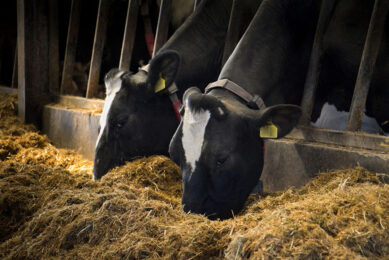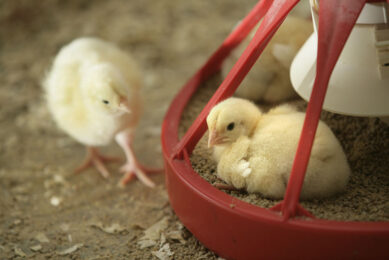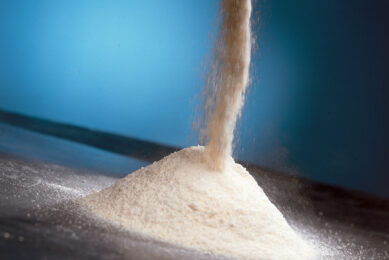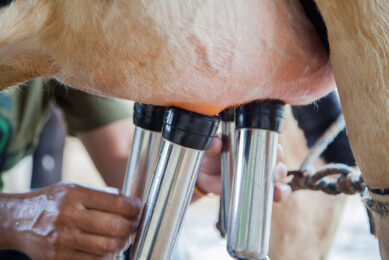Surfactant boosts mill productivity and efficiency
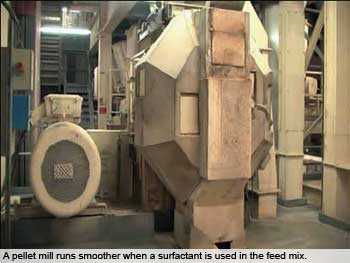
In this first issue of ‘AllAboutFeed’ we report on the latest feed industry research from Germany, where trials conducted by the International Research Institute of Feed Technology (IFF) at Braunschweig-Thune have highlighted the significant commercial and production benefits of using a surfactant in the pelleting process.
By Julian Cooksley , Kendalls, UK
Given the opportunity, any business would welcome the chance to reduce its operating costs and improve productivity. Even better if the solution that provided those benefits could also improve the quality of the product that it was able to offer its customers. Such a combination is the reason why Anitox is enjoying increasing interest from feed manufacturers in its Maxi-Mil® programme. Two key issues at present to minimise production costs and maximize feed sales are electricity consumption and moisture loss in finished pelleted feeds, because they equate to an immediate loss of saleable product and reduced profitability.
It was to address these and other production issues that Anitox developed the Maxi-Mil programme. At its core is Maxi-Mil, a liquid mould inhibitor with surfactant and lubrication characteristics that enhance the conditioning process through optimal heat transfer. Originally it was developed to help feed mills in Asia overcome moisture loss in finished feed and increase the storage life of bagged feed products by inhibiting mould development.
Anitox’s own extensive trials in over 50 countries have proven the product’s ability to substantially reduce shrink/process losses and pellet press energy (kWh/t) use, lower costs, and optimise carbon footprint. The product also reduces friction and wear in mill equipment, cuts die and roll costs by 36%, minimises the level of ‘fines’, enhances digestibility, and improves pellet durability by 3%. Calculations showed that in 2008 the combination of these benefits would have produced a financial benefit of US$140,000 for a typical 150,000-t mill.
German study at IFF
Addition weight was given to these findings by a study conducted at the International Research Institute of Feed Technology (IFF) in Braunschweig-Thune, Germany. In April 2009, IFF researchers evaluated the performance and effect of Maxi-Mil compared with the addition of an equivalent amount of water in the production of poultry, ruminant and swine diets. Their objective was to study its effect on pellet press electricity requirements, processing temperatures and moisture content, together with pellet stability and quality. The Maxi-Mil concentration was kept constant throughout all trials using a solution of 5% Maxi-Mil and 95% pure water at ambient temperatures of 18-20°C. To achieve even distribution within the feedstuff a 1% Maxi-Mil solution was sprayed and mixed in using a Bühler Speedmix fitted with one-component nozzles.Two series of trials (one main and one validation) used saturated steam to achieve three levels of conditioning, resulting in process temperatures of 65-78°C, the pellets being produced using a ring-die press. Throughput was standardised at approx. 1,000 kg/h using a 3 x 60 mm die for broiler/pig feed and 4 x 50 mm die for dairy cattle feed, while measurement and sampling beginning when constant conditions and thermal equilibrium was reached. The finished mixed feed was conditioned with saturated steam, pelleted, and the pellets cooled. Two versions of each of the three rations were produced, one incorporating Maxi-Mil and another (the control) replaced with 1% pure water applied via the conditioner. Pelleting conditions were registered and documented by repeated sampling, while electronic measurements were taken before and after conditioning, after pelleting and after cooling. Temperatures, mass flow and power requirement of the pellet press were determined and registered continuously, pellet press energy requirement (kWh/t) was recorded and pellets removed for stability testing after cooling. Pellet moisture content was determined by taking four samples evenly during the test period at each measuring point, while pellet durability was determined by Quick and Holmen tests in four collective samples during the test period.
Moisture content
Moisture is of critical importance to all feed manufacturers, as loss of mass has a direct impact on production and profitability. Before each trial began, the researchers measured the moisture contents of untreated broiler, pig and cattle feeds. During the control trials, moisture was added using varying percentages of saturated steam and 1% water via the conditioner to compensate for the Maxi-Mil used in the main trial. After adding a 1% solution of Maxi-Mil to the main trial the moisture content was determined, moisture was added using saturated steam, and a reading taken.During pelleting, no significant change was recorded in the moisture of the broiler feed between the control and main batches. However, after cooling under identical ambient conditions, the moisture content of pellets treated with Maxi-Mil was 0.7% higher, the average increase being 0.5%. Similar trials conducted with pig feed showed that during pelleting the moisture content of the control and Maxi-Mil-treated pellet remained almost unchanged, with average losses of 0.1%, but after cooling the treated pellets retained up to 0.5% more moisture. When cattle feed was pelleted there was only a marginal loss in moisture content for both pellet types, but after cooling those treated with Maxi-Mil retained up to 0.6% more moisture.
Trials to investigate the effect of temperature found that Maxi-Mil enabled higher amounts of saturated steam to be used during the conditioning process without blocking the mill. There was no disturbance of the compacting process, because the temperature rise within the pellet press was moderate and lower than in trials without Maxi-Mil. Depending on die selection, temperature rise fell from 8°C to 3°C when pelleting cattle feed, and from 15°C to 11°C for pig feed.
Mass throughput
Mass throughput was kept constant for each feed type, with or without the product, and the electricity consumption recorded. Although the scope of the trial was not to demonstrate enhanced throughput using Maxi-Mil, its effects were apparent when comparing power use (amperage or kilowatt hours) and electricity consumption (kWh/t).
The main broiler treated feed pelleting trials showed that at comparable conditioning temperatures the energy demand altered only marginally. However, Maxi-Mil allowed the researchers to process feed at higher temperatures and achieve better conditioning at up to 78°C and pelleting at up to 80°C, without risk of blocking the die. At the same time, the specific energy demand declined and electricity use fell by 18%. Trials with pig and cattle feed showed similar advantages, with electricity savings of 6% and 19%, respectively.
Pellet durability
The trials also found that Maxi-Mil’s effects on pellet durability and stability depended on the feed formulation. Pelleting formulas that are low in fat and rich in starch, such as pig feed, normally result in acceptable pellet quality, but pelleting becomes more challenging with high fat/fibre contents combined with low starch concentrations, so additive effects were naturally more evident in broiler and cattle feed.
Using Maxi-Mil, pellet durability index (PDI) for both broiler and cattle feed was improved by almost 20%, according to the Quick-Test that was used to perform mechanical stress tests on the pellets, and by 30% in the case of the Holmen-Test. Pig feed showed an improvement of almost 10% in the Quick-Test and 16% in the Holmen-Test.IFF found that, on a consolidated basis, the addition of 1% Maxi-Mil solution improved conditioning rates by increasing the thermal acceptance of the pellet press due to more thorough heating of the meal particles. It also reduced temperature rise in the pellet press, probably due to less friction in the die, lowered pellet press energy requirement, improved pellet stability and increased the PDI index, or reduced fines, whilst also increasing moisture retention during cooling.Researchers also found that the beneficial effects could be demonstrated across a range of feedstuffs differing incomposition and particle size. Whilst the impact of Maxi-Mil was more evident in combination with difficult-to-process feed formulations, the benefits were identifiable in all cases.
Commercial benefits
Richard Oldman, the feed technologist who represented Anitox during the duration of the independent trials at IFF, emphasises that the results provide feed manufacturers with strong independent data, confirming the benefits of the product. A highly-experienced miller, Oldman helps feed compounders to optimise mill productivity and profitability, advising facilities with annual capacities from 70,000-1.5 million t throughout Europe, the Middle East and Africa. “Maxi-Mil is used widely throughout the world and its popularity is increasing as feed manufacturers come under increasing pressure to reduce costs and improve efficiency,” Oldman says. “The benefits identified by the IFF reflect the findings of our own research and highlight the potential gains from using this product. Different mills have different requirements, but all can benefit in at least one key area, whether improved moisture retention in finished feed, higher product quality, reduced power consumption or greater mill throughput.”
At a time when feed manufacturers are increasingly looking for greater consistency in the finished product, Oldman says that the perennial issue is inconsistent moisture content in the finished product. “Through the various stages of manufacture you inevitably lose a certain percentage of moisture, but using Maxi-Mil will reduce milling loss or ‘shrink’, bringing the actual moisture content in the finished feed closer to the expected figure.”
This is particularly important in very hot climates such as Saudi Arabia, where summer temperatures regularly exceed 50°C. “In August last year, for example, I recorded a temperature of 53°C inside one mill in the Middle East, where the customer now uses a 2.44% Maxi-Mil solution, almost two and a half times the standard rate, to maximise moisture retention. Another mill in an area where temperatures can reach almost 40°C uses a 2% solution to minimise the difference between the predicted and actual moisture content in the finished feed, which enables them to budget accurately,” says Oldman.
Stretching the comfort zone
“Most mills are operated within a comfort zone, a level at which they can perform with a minimum of problems, so a 20 t per hour pellet press may normally only produce 17 t per hour, but Maxi-Mil can be used to raise the comfort zone closer to the rated capacity.
In situations where mills are conditioning feed at temperatures of 40-75°C the use of Maxi-Mil allows those levels to be increased by approx. 8°C at the lower end of the temperature range and by 5°C at the upper level. This is because Maxi-Mil reduces the likelihood of blockages occurring in the pellet mill, a critical consideration in maintaining production, yet to achieve 10-12% greater throughput using the same amount of electricity or maintain throughput with lower energy use and power costs. In one instance, the increase in throughput, which we were able to achieve by introducing Maxi-Mil, enabled the mill to eliminate its Saturday shift because it was able to meet production targets during the week,” he notes.“Some of the mills which I visit have one or more quite specific problems, such as having to work with old, inefficient processing equipment but needing to reduce electricity use and manufacturing costs to compete with companies using newer, more efficient equipment. Others have more general manufacturing problems and have been unable to achieve the desired results from the products and equipment at their disposal. Recently, for example, we were asked to investigate a serious quality issue and by working with the customer to introduce Maxi-Mil we were able to reduce the level of fines from 6% to 4%, a significant improvement. Maxi-Mill is the icing on the cake in terms of improving milling efficiency, not the cake itself, so you do need to get the basics right,” Oldman concludes.
Source: AllAboutFeed vol 1 nr 1, 2010




